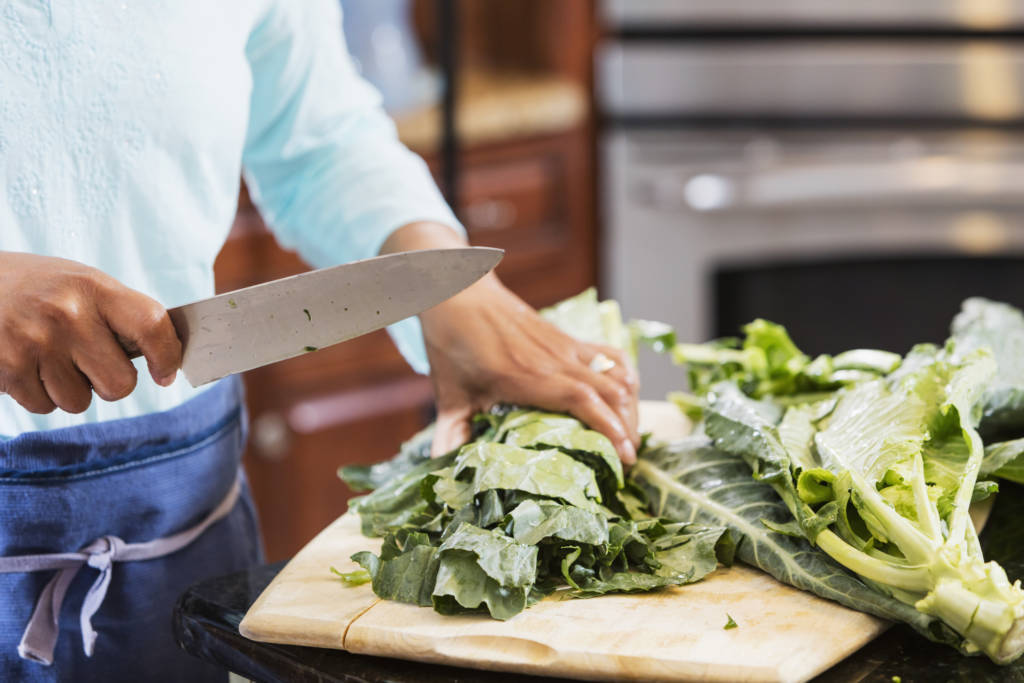
Stroke is the fifth leading cause of death in the U.S. affecting nearly 800,000 people. Black men and women are at the highest risk of having a stroke than any other racial group in the United States. Compared to whites, they are twice as likely to have a stroke, have strokes at younger ages, die from stroke, or have a stroke-related disability that affects their daily activities.
High blood pressure is a major risk factor for stroke, and 1 in 3 blacks suffer from high blood pressure. The DASH diet is a proven effective treatment for hypertension and reducing stroke risk. In fact, research shows DASH is more effective in lowering blood pressure in blacks than whites.
What is a stroke?
A stroke occurs when a clot or rupture interrupts blood flow to an area of the brain. When brain cells are starved of oxygen-rich blood, they die. Once you have a stroke, there's a 1in 4 chance you will have a second stroke. The good news is, up to 80 percent of second clot-related strokes may be preventable.
Risk factors for stroke fall into one of three categories: lifestyle risk factors such as being overweight, eating too much salt and smoking; medical risk factors like high blood pressure, diabetes, or sickle cell anemia; and uncontrollable risk factors such as age, gender, and ethnicity.
While some risk factors for stroke such as genetics cannot be controlled, research suggests you can reduce lifestyle and some medical risk by following the DASH diet.
What is the DASH diet?
DASH stands for Dietary Approaches to Stop Hypertension. The DASH diet is a flexible and balanced eating plan that emphasizes vegetables, fruits, and whole grains; includes fat-free or low-fat dairy products, fish, poultry, beans, nuts, and vegetable oils; limits foods that are high in saturated fat like fatty meats, full-fat dairy products, and tropical oils such as coconut, palm kernel, and palm oils.
For some individuals, following the DASH diet can be just as effective in lowering blood pressure as taking high blood pressure medication. Studies have found the more you can follow the DASH diet the greater your chances are of preventing a stroke. DASH is rich in potassium, magnesium, calcium, protein, and fiber. These are all nutrients that will help to lower blood pressure—a major risk factor for stroke.
Following DASH
The following tips will help you ease into the DASH-style of eating. Changing your eating habits is not easy so go slow and give yourself a chance to adjust and make DASH part of your daily routine. You'll get the best results if you make changes over a couple of days or weeks. And rather than ditch your family favorites try to modify your traditional recipes to meet the DASH guidelines.
DASH eating plan has more servings of fruits, vegetables, and whole-grain foods than you may be used to eating. These foods are high in fiber and may cause some bloating and diarrhea. To avoid these problems, gradually increase the amount of fruit, vegetables, and whole-grain foods that you eat over several weeks. For example, add a serving of vegetables at lunch one day and dinner the next, and add fruit at one meal or as a snack.
Increase your use of fat-free and low-fat milk products to three servings a day. If you have trouble digesting milk try yogurt or buy lactose-free milk. The live and active cultures in yogurt make it a more easily digestible alternative to milk.
Limit lean meats to 6 ounces per day. That’s 3 ounces—about the size of a deck of cards, for lunch and dinner. If you usually eat large portions of meats, cut them back over a couple of days—by half or a third at each meal.
Include two or more vegetarian-style, or meatless, meals each week.
If you take medicines to control your high blood pressure keep taking them, and be sure to tell your healthcare provider that you are now eating the DASH way.
To personalize DASH, based on your age, weight goals and activity level click here for a copy of the DASH eating guide.

Constance Brown-Riggs, is a registered dietitian, certified diabetes educator, national speaker and author of the Diabetes Guide to Enjoying Foods of the World, a convenient guide to help people with diabetes enjoy all the flavors of the world while still following a healthy meal plan. Follow Constance on social media @eatingsoulfully









